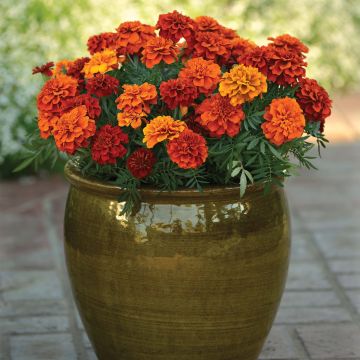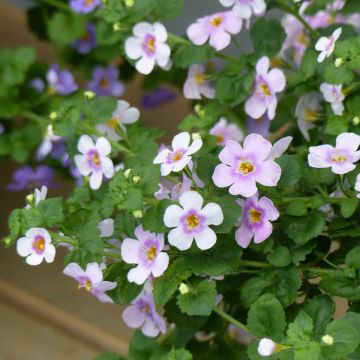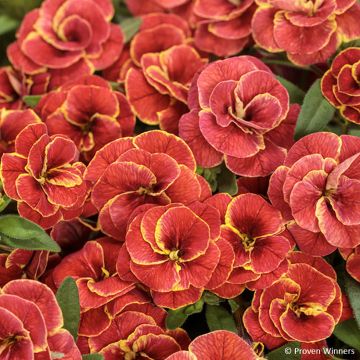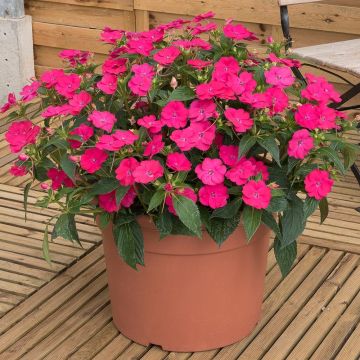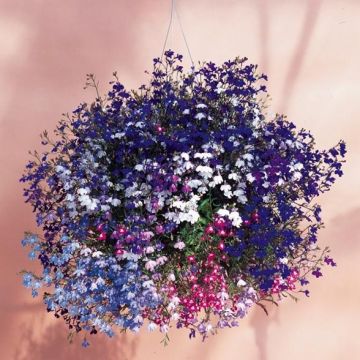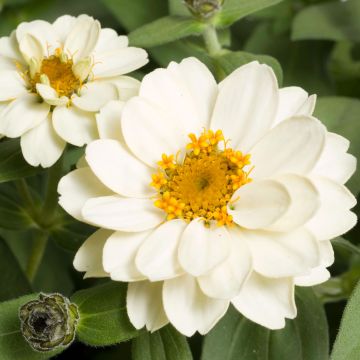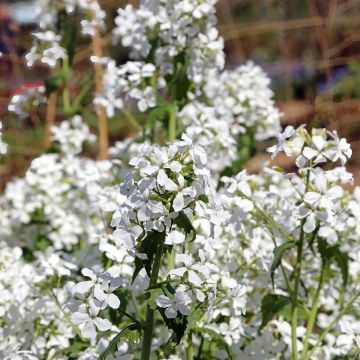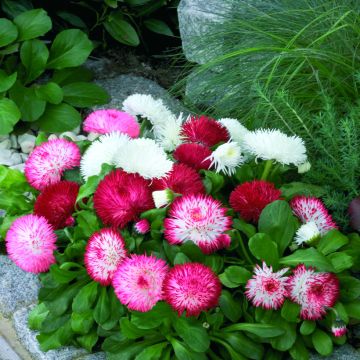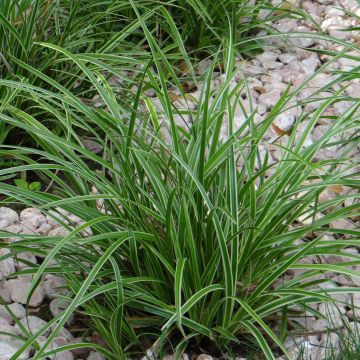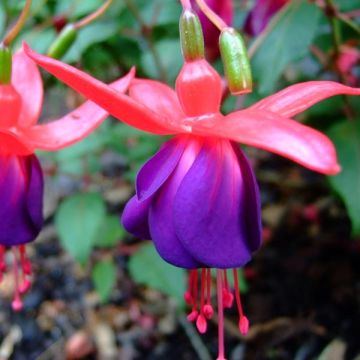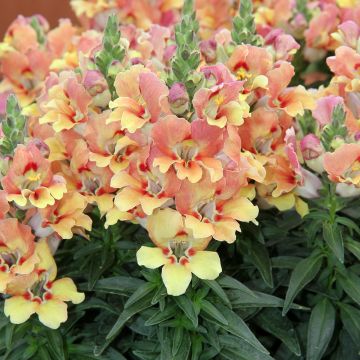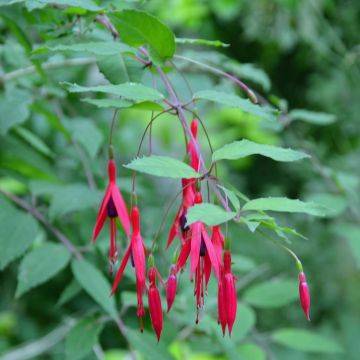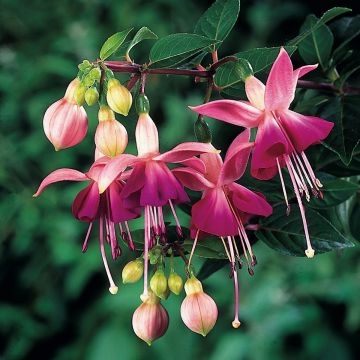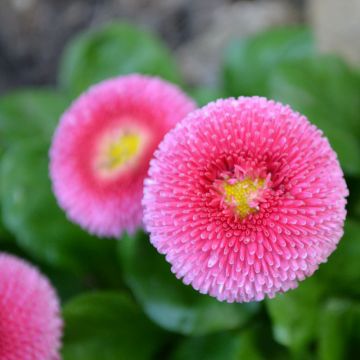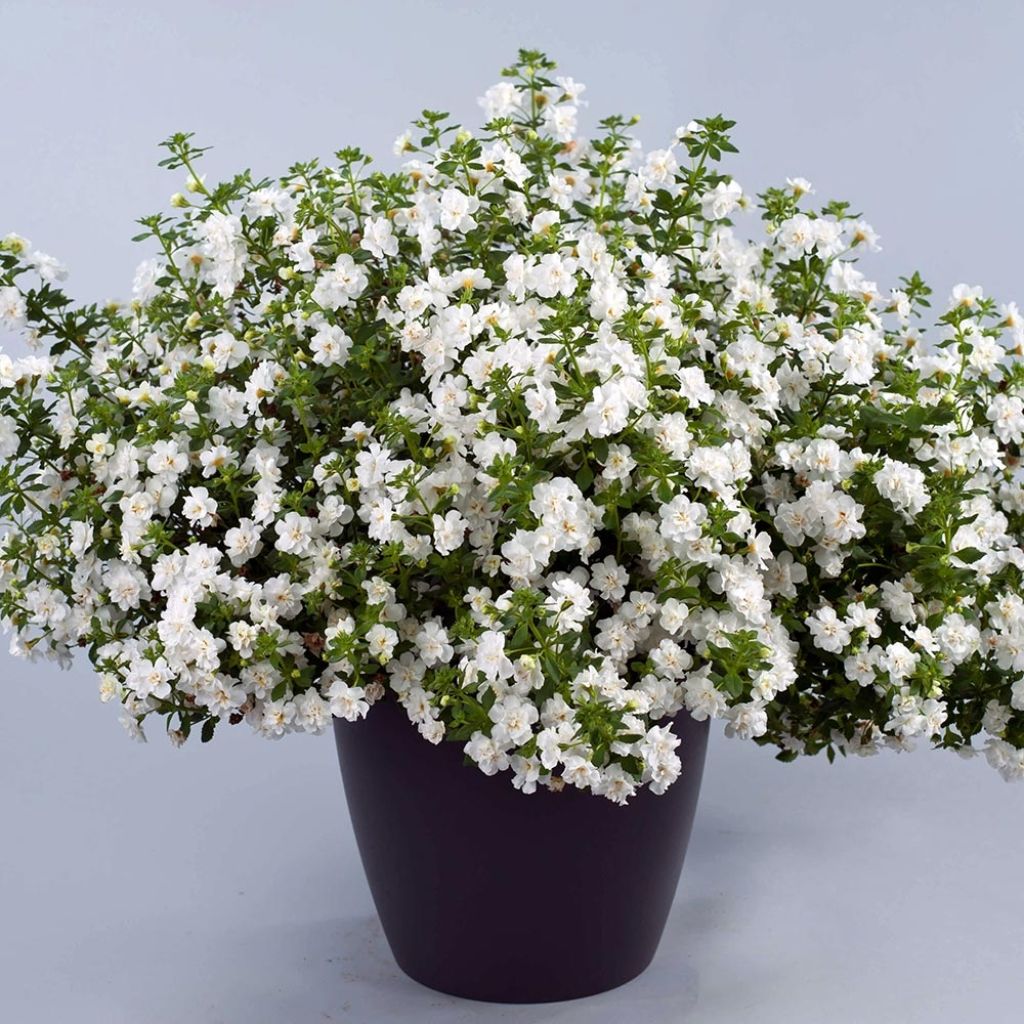

Bacopa Scopia Double Snowball Mini-mottes
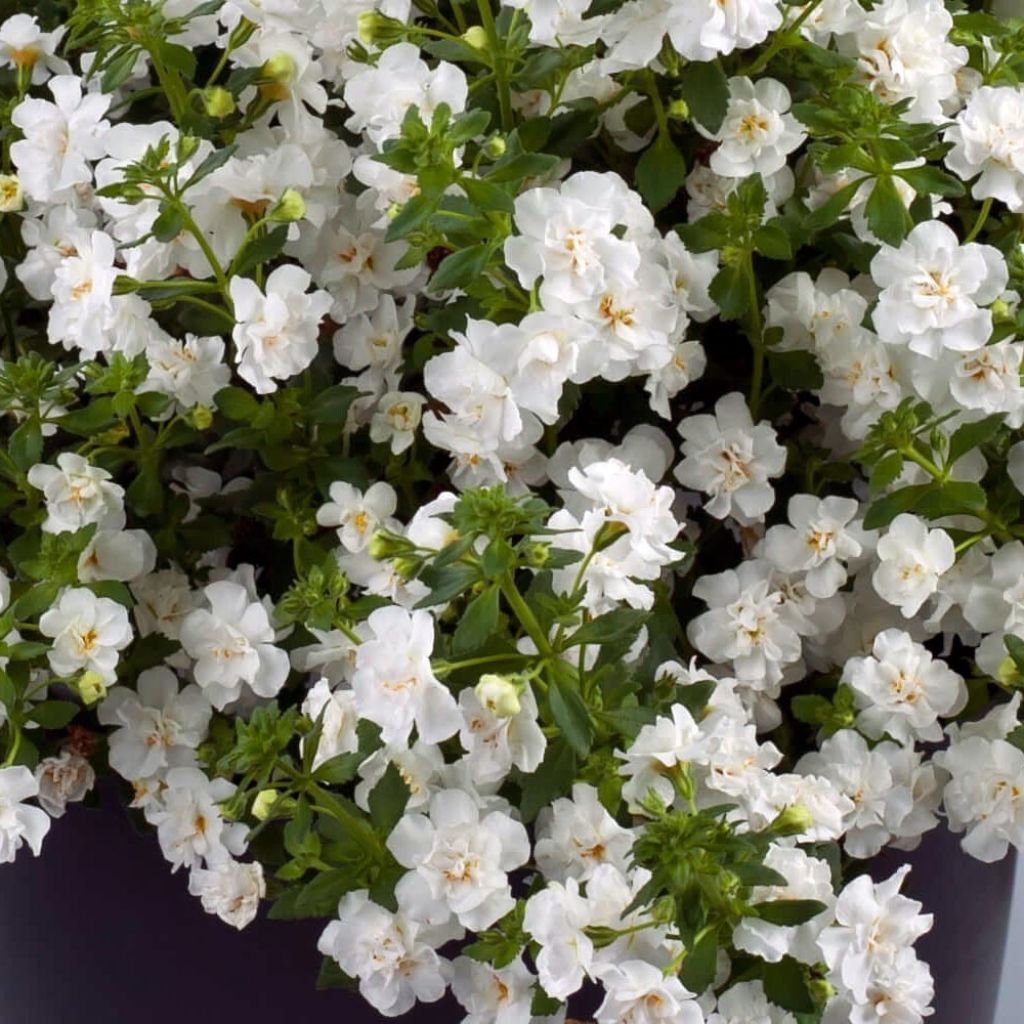

Bacopa Scopia Double Snowball Mini-mottes
Sutera Scopia Double Snowball
Sutera cordata Scopia® Double Snowball
Bacopa, Bacopa Snowtopia, Bacopa Abunda, Sutera, Giant Bacopa, Waterhyssop
This item cannot be shipped to the selected country
Delivery charge from €5.90
More information
Schedule delivery date,
and select date in basket
This plant carries a 6 months recovery warranty
More information
We guarantee the quality of our plants for a full growing cycle, and will replace at our expense any plant that fails to recover under normal climatic and planting conditions.
From €5.90 for pickup delivery and €6.90 for home delivery
Express home delivery from €8.90.

Does this plant fit my garden?
Set up your Plantfit profile →
Description
The Bacopa 'Scopia Double Snowball' is a very recent selection of Sutera that forms a remarkable cushion, dense in foliage, sprinkled with large double flowers for a bacopa, which are similar to small roses of perfect white. This plant, suitable for mild climates, is grown as an annual and blooms for a long time and abundantly, from May-June to October. It allows for quickly and effectively filling hanging baskets and balconies, either alone or in combination with other varieties as well as with all terrace plants.
Bacopas are perennial plants or frost-sensitive shrubs of the scrophulariaceae family, originating from South Africa. The Scopia ® 'Double Snowball' selection develops slightly woody stems that spread all around the base and quickly form a rounded and very bushy plant, approximately 25-30 cm (10-12in) in height by 35 cm (14in) in width. They are adorned with small green and velvety heart-shaped leaves, approximately 1.5 cm (1in), with toothed edges. The stems are covered throughout the summer with bouquets of 3 cm (1in) diameter double flowers, generously scattered along their length, originating from the axils of the leaves. The flowers of the 'Scopia Double Snowball' variety are fully open towards the sky and truly bright. They have a tubular base and spread out in double corollas, almost completely covering a small yellow center.
Thanks to their shape, bacopas easily combine with all balcony plants. For example, they can be paired with taller flowers such as dwarf roses, pennisetums or geraniums, double Impatiens, but they are just as effective when grouped together or used as ephemeral ground cover in flower beds. The 'Double Snowball' Bacopa is perfect for brightening up a windowsill or the base of a partially sun-exposed wall. It will accompany all pastel-toned flowers and temper the vibrant colors of trailing surfinias and fuchsias.
Note: Please be aware that our young plug plants are professional products intended for experienced gardeners: upon receipt, repot and store them under cover (veranda, greenhouse, cold frame) at a temperature above 14C° for a few weeks before planting them outdoors once the risk of frost has definitively passed.
Report an error about the product description
Sutera Scopia Double Snowball in pictures
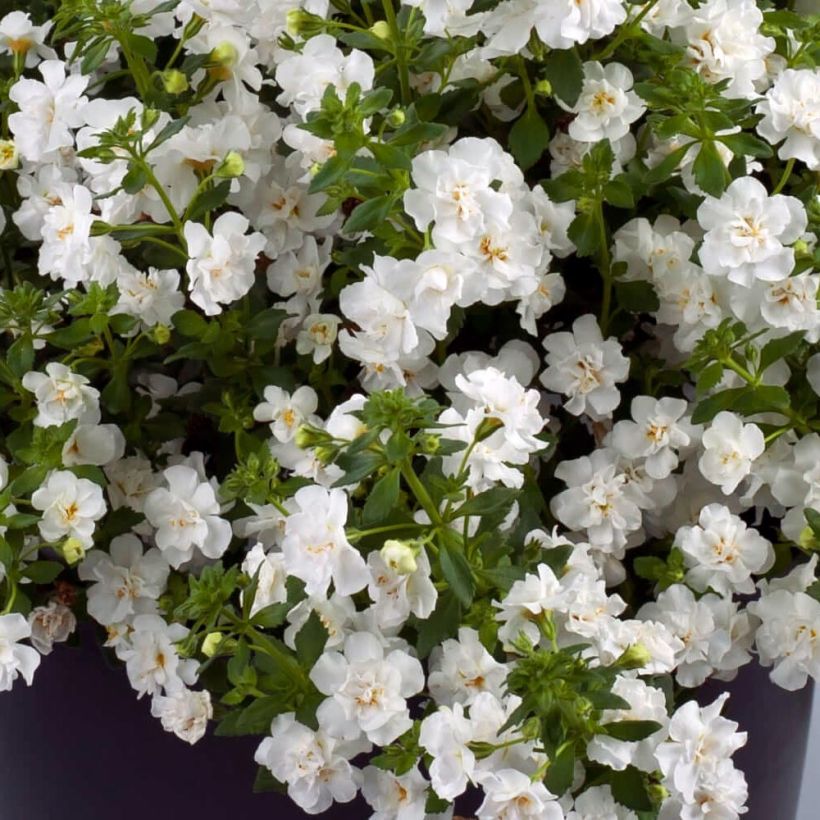

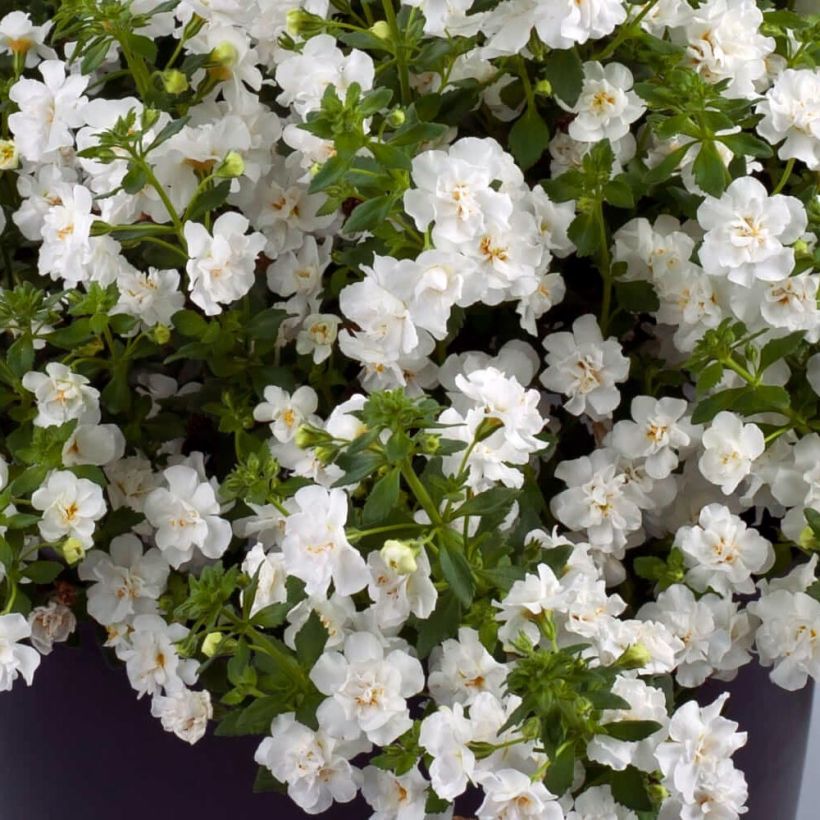

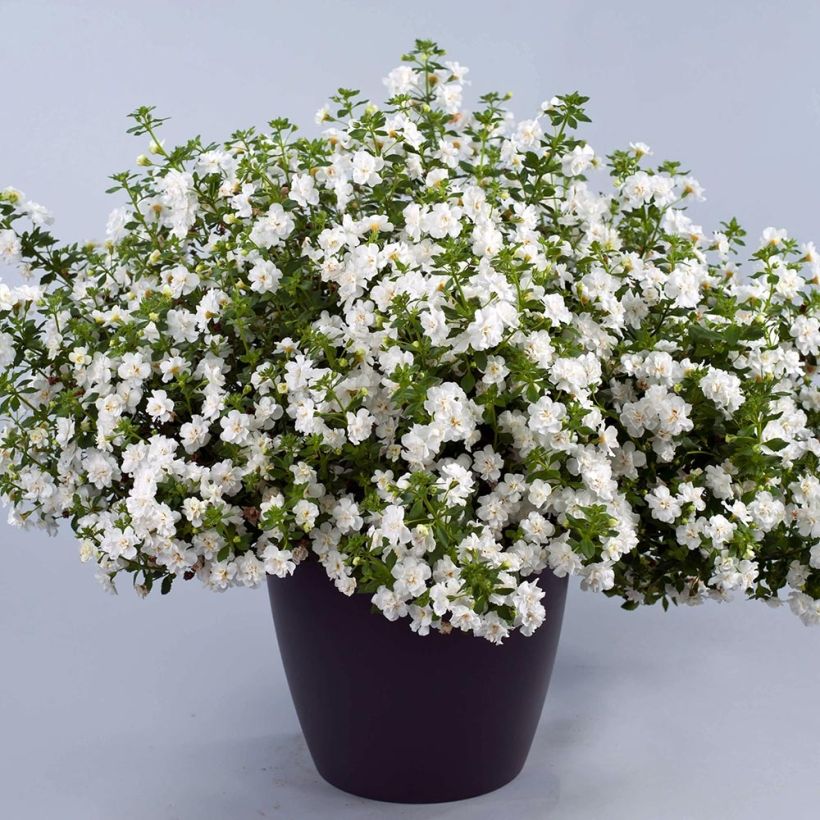

Flowering
Foliage
Plant habit
Botanical data
Sutera
cordata
Scopia® Double Snowball
Scrophulariaceae
Bacopa, Bacopa Snowtopia, Bacopa Abunda, Sutera, Giant Bacopa, Waterhyssop
Cultivar or hybrid
Other Annuals A to Z
Planting and care
Plant your bacopas in a sunny location or possibly in partial shade in very hot regions. These plants need a light and humus-rich soil and appreciate a fertilizer input. They tolerate a temporarily dry soil quite well, but regular watering is essential to support flowering. You can plant your bacopas in a pot where they should be regularly watered. Be careful not to let water stagnate in a saucer, as bacopa roots dislike excessive humidity. Usually grown as annuals, they are actually fragile perennials: by bringing them indoors at the first frost, you can extend their flowering into autumn and winter. Outdoor cultivation is possible by the seaside, with good winter mulching. Prune lightly in March. To further branch out the bacopas, you can pinch the tips of the stems to encourage them to divide.
Planting period
Intended location
Care
-
, onOrder confirmed
Reply from on Promesse de fleurs
Plug plants - Annuals
Haven't found what you were looking for?
Hardiness is the lowest winter temperature a plant can endure without suffering serious damage or even dying. However, hardiness is affected by location (a sheltered area, such as a patio), protection (winter cover) and soil type (hardiness is improved by well-drained soil).

Photo Sharing Terms & Conditions
In order to encourage gardeners to interact and share their experiences, Promesse de fleurs offers various media enabling content to be uploaded onto its Site - in particular via the ‘Photo sharing’ module.
The User agrees to refrain from:
- Posting any content that is illegal, prejudicial, insulting, racist, inciteful to hatred, revisionist, contrary to public decency, that infringes on privacy or on the privacy rights of third parties, in particular the publicity rights of persons and goods, intellectual property rights, or the right to privacy.
- Submitting content on behalf of a third party;
- Impersonate the identity of a third party and/or publish any personal information about a third party;
In general, the User undertakes to refrain from any unethical behaviour.
All Content (in particular text, comments, files, images, photos, videos, creative works, etc.), which may be subject to property or intellectual property rights, image or other private rights, shall remain the property of the User, subject to the limited rights granted by the terms of the licence granted by Promesse de fleurs as stated below. Users are at liberty to publish or not to publish such Content on the Site, notably via the ‘Photo Sharing’ facility, and accept that this Content shall be made public and freely accessible, notably on the Internet.
Users further acknowledge, undertake to have ,and guarantee that they hold all necessary rights and permissions to publish such material on the Site, in particular with regard to the legislation in force pertaining to any privacy, property, intellectual property, image, or contractual rights, or rights of any other nature. By publishing such Content on the Site, Users acknowledge accepting full liability as publishers of the Content within the meaning of the law, and grant Promesse de fleurs, free of charge, an inclusive, worldwide licence for the said Content for the entire duration of its publication, including all reproduction, representation, up/downloading, displaying, performing, transmission, and storage rights.
Users also grant permission for their name to be linked to the Content and accept that this link may not always be made available.
By engaging in posting material, Users consent to their Content becoming automatically accessible on the Internet, in particular on other sites and/or blogs and/or web pages of the Promesse de fleurs site, including in particular social pages and the Promesse de fleurs catalogue.
Users may secure the removal of entrusted content free of charge by issuing a simple request via our contact form.
The flowering period indicated on our website applies to countries and regions located in USDA zone 8 (France, the United Kingdom, Ireland, the Netherlands, etc.)
It will vary according to where you live:
- In zones 9 to 10 (Italy, Spain, Greece, etc.), flowering will occur about 2 to 4 weeks earlier.
- In zones 6 to 7 (Germany, Poland, Slovenia, and lower mountainous regions), flowering will be delayed by 2 to 3 weeks.
- In zone 5 (Central Europe, Scandinavia), blooming will be delayed by 3 to 5 weeks.
In temperate climates, pruning of spring-flowering shrubs (forsythia, spireas, etc.) should be done just after flowering.
Pruning of summer-flowering shrubs (Indian Lilac, Perovskia, etc.) can be done in winter or spring.
In cold regions as well as with frost-sensitive plants, avoid pruning too early when severe frosts may still occur.
The planting period indicated on our website applies to countries and regions located in USDA zone 8 (France, United Kingdom, Ireland, Netherlands).
It will vary according to where you live:
- In Mediterranean zones (Marseille, Madrid, Milan, etc.), autumn and winter are the best planting periods.
- In continental zones (Strasbourg, Munich, Vienna, etc.), delay planting by 2 to 3 weeks in spring and bring it forward by 2 to 4 weeks in autumn.
- In mountainous regions (the Alps, Pyrenees, Carpathians, etc.), it is best to plant in late spring (May-June) or late summer (August-September).
The harvesting period indicated on our website applies to countries and regions in USDA zone 8 (France, England, Ireland, the Netherlands).
In colder areas (Scandinavia, Poland, Austria...) fruit and vegetable harvests are likely to be delayed by 3-4 weeks.
In warmer areas (Italy, Spain, Greece, etc.), harvesting will probably take place earlier, depending on weather conditions.
The sowing periods indicated on our website apply to countries and regions within USDA Zone 8 (France, UK, Ireland, Netherlands).
In colder areas (Scandinavia, Poland, Austria...), delay any outdoor sowing by 3-4 weeks, or sow under glass.
In warmer climes (Italy, Spain, Greece, etc.), bring outdoor sowing forward by a few weeks.


































